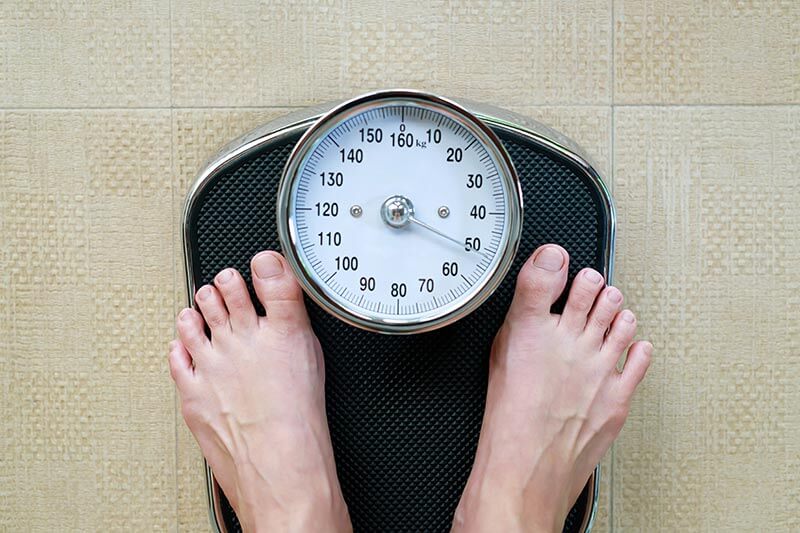As men, we’re all a little guilty of not always looking after ourselves. Many of us avoid the doctors and regular check-ups, opting for believing that nothing is wrong until… It is.
Now, guys, I’m not here to bully you into going to the doctor. But I am here to encourage you to keep on top of your prostate health.
Prostate concerns are more common than you may think – especially as we get older. These problems include prostatitis, benign prostatic hyperplasia (BPH), and prostate cancer. So, without further ado, here’s how to keep your prostate healthy in 6 easy ways.
How the prostate changes
It’s easy to get a little frightened at the thought of your prostate changing. Especially since many of us are wired to believe that any changes are bad. But that’s certainly not the case in terms of the prostate.
In fact, a man’s prostate is about the size of a walnut in their 20s, but by the time a guy hits his 40s, it can grow to the side of an apricot. While an enlarged prostate can show some symptoms for some men, it isn’t always the case.
What is the prostate?
A part of the male reproductive system, the prostate can be found just below the bladder, right in front of the rectum. This makes it easy to navigate during a digital rectal exam (DRE).
Typically, the prostate increases with age, but in men under 40, it is usually about the size of a walnut. The prostate gland’s primary function is to make and secrete prostatic fluid, one of the components of semen. As well as keeping your sperm healthy, this fluid also helps to transport it.
Also Read: Fight back against erectile dysfunction with these exercises
Prostatic fluid typically accounts for around 30 to 35% of semen volume. With around 60% of semen coming from the seminal vesicles, only 5% of semen is sperm, produced in the testicles.
What to look out for: Signs of an enlarged prostate
It’s totally normal for the size of your prostate to change as you get older. Typically, there are two periods of time where the prostate experiences the most growth:
- During early puberty (when the prostate doubles in size)
- Continued through a man’s life, from around the age of 25
As a man ages, there can be a larger amount of symptoms, referred to as lower urinary tract symptoms (LUTS). One of the most common signs of an enlarged prostate is the need to urinate during the night, more often than when you were younger.
If you do experience any LUTS, it’s important to visit a healthcare professional. Here are some of the common LUTS you may experience:
- Needing to urinate quite often
- Needing to get up and urinate more often during the night (nocturia)
- Trouble starting to urinate
- Feeling as though your bladder is full, even after you’ve just urinated
- A weak urine stream
- Starting and frequently stopping while urinating
- Having to strain to urinate
Most common prostate issues

As we get older, we are naturally at higher risk of prostate issues. The most common problems are benign prostatic hyperplasia (BPH), inflammation of the prostate (prostatitis), and prostate cancer.
Benign prostatic hyperplasia
Also referred to as an enlarged prostate – benign prostatic hyperplasia or hypertrophy (BPH) is most common in older men. According to research, around 50% of men between 51 and 60 have BPH. As we age even further, this number increases, with around 90% of men 80+ years old affected by BPH.
Prostatitis
Inflammation of the prostate gland – otherwise known as prostatitis – results in a swollen and tender prostate. This is more common than you may think, in men of all ages. While it may sound a little daunting, it’s important to note that it does not increase the risk of prostate cancer.
Both inflammation and bacteria can be the cause of prostatitis. Here are the four main types to look out for:
-
- Acute bacterial prostatitis – Caused by bacteria, this type of prostatitis develops quite rapidly. Thankfully, it’s the easiest form to treat. The most common symptoms include blood in the urine and fevers/chills – and can be treated with a 2 to 4 week course of antibiotics.
- Chronic bacterial prostatitis – Also caused by bacteria, however, this form develops more slowly. One of the main symptoms is having bladder infections that keep coming back. Around 60 to 80% of patients see improvement after antibiotics for several weeks.
- Chronic pelvic pain syndrome (CPPS) – This type of prostatitis has symptoms that vary from one guy to the next, and can include: pelvic pain, pain with ejaculation and problems urinating. Treatments somewhat depend on your symptoms and include alpha-blockers, antibiotics and anti-inflammatory medications.
- Asymptomatic inflammatory prostatitis – This type has no symptoms but is often discovered while testing for other conditions. Because it is asymptomatic, treatment is generally not necessary.
Prostate cancer
The most common cancer in men (after skin cancer) in the United States, The American Cancer Society estimates that 248,530 men will receive a new diagnosis of prostate cancer, and about 34,130 will die from the disease.
Unfortunately, age is the most significant risk factor for prostate cancer – making it rare in men younger than 40. However, the possibility of developing prostate cancer rises rapidly after the age of 50.
Also Read: How does alcohol affect you?
There are additional risk factors too, including:
- Being African-American
- Family history
- Smoking
- A diet high in saturated fat
6 ways to keep your prostate healthy
1. Quit smoking
We all know that smoking is bad for us. Not only can quitting smoking benefit your overall health, but it is one of the most powerful interventions you can make for your prostate health. While there is plenty of room for further research regarding smoking and getting prostate cancer, we do know that men with prostate cancer who smoke have a 61% increased risk of dying from the disease – compared to men who have never smoked.
2. Keep an eye on your weight

Typically, a high BMI (body mass index) contributes to a variety of health concerns and diseases. Looking after your weight can help you to lead a happier, healthier life in general. In terms of prostate health, there is little research linking a high BMI to an increased risk of prostate cancer.
However, research has shown that when an obese man gets prostate cancer, a higher BMI puts him at greater risk of developing more aggressive and faster-developing forms of prostate cancer.
3. Exercise often
As we talked about above, a healthy BMI can contribute to your general health and your prostate health. This is where exercise comes in! To both reduce your risk of getting prostate cancer and to reduce your risk of dying if you were to be diagnosed, it’s recommended you get 3+ hours of exercise each week.
Research has shown that men who get 3+ hours of exercise weekly were 61% less likely to die of their cancer when compared to men who exercised less than 60 minutes a week.
4. Fill your diet with heart-healthy foods
The risk of prostate cancer may be increased in men who eat high-fat foods. However, to date, there is no good research that reducing fat or adding fruits and vegetables to the diet can help reduce the risk of prostate cancer.
Also Read: Is the male menopause real or a myth?
However, research shows that following a healthy diet high in omega-3 fats (especially salmon), low in saturated fat (especially red meat and whole dairy products) and high in antioxidants (eg tomatoes, berries) are beneficial for overall health, including your prostate.
5. Get plenty of vitamin D

A common deficiency in older men, some researchers believe there’s a link between vitamin D deficiency and higher rates of BPH. However, there is plenty of room for further research. Either way, it’s important to keep on top of your vitamin D levels, especially if you live somewhere with little sun.
6. Speak to a healthcare provider about prostate cancer screening
At the start of this article, I mentioned how many of us avoid going to see a doctor or a healthcare professional, even when we think something might not quite be right. If you’re at high risk of prostate cancer, due to your ethnicity or history of prostate cancer in your family, it’s even more crucial to seek guidance and attend prostate cancer screening.
The bottom line
It’s never too early to start thinking about your prostate health. As this type of condition is quite common, especially as we get older, it’s incredibly important to recognise any changes and take action. If you notice any urinary or sexual symptoms, always speak to a healthcare professional.
Looking after your general health with a healthy diet and regular exercise can benefit your prostate health.












